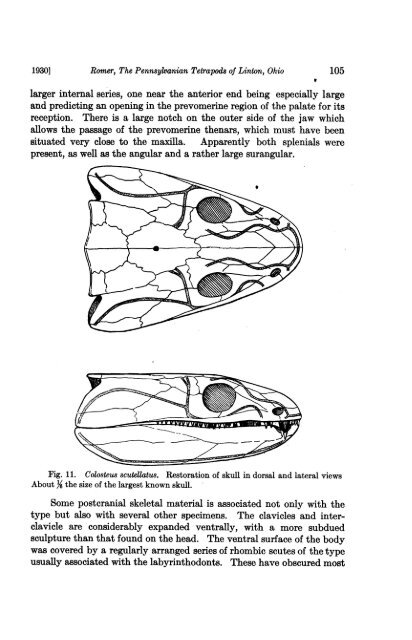View/Open - American Museum of Natural History
View/Open - American Museum of Natural History
View/Open - American Museum of Natural History
You also want an ePaper? Increase the reach of your titles
YUMPU automatically turns print PDFs into web optimized ePapers that Google loves.
1930]<br />
Romer, The Pennsylvanian Tetrapods <strong>of</strong> Linton, Ohio<br />
larger internal series, one near the anterior end being especially large<br />
and predicting an opening in the prevomerine region <strong>of</strong> the palate for its<br />
reception. There is a large notch on the outer side <strong>of</strong> the jaw which<br />
allows the passage <strong>of</strong> the prevomerine thenars, which must have been<br />
situated very close to the maxilla. Apparently both splenials were<br />
present, as well as the angular and a rather large surangular.<br />
105<br />
Fig. 11. Colosteubs scutellatus. Restoration <strong>of</strong> skull in dorsal and lateral views<br />
About 3 the size <strong>of</strong> the largest known skull.<br />
Some postcranial skeletal material is associated not only with the<br />
type but also with several other specimens. The clavicles and interclavicle<br />
are considerably expanded ventrally, with a more subdued<br />
sculpture than that found on the head. The ventral surface <strong>of</strong> the body<br />
was covered by a regularly arranged series <strong>of</strong> rhombic scutes <strong>of</strong> the type<br />
usually associated with the labyrinthodonts. These have obscured most
















